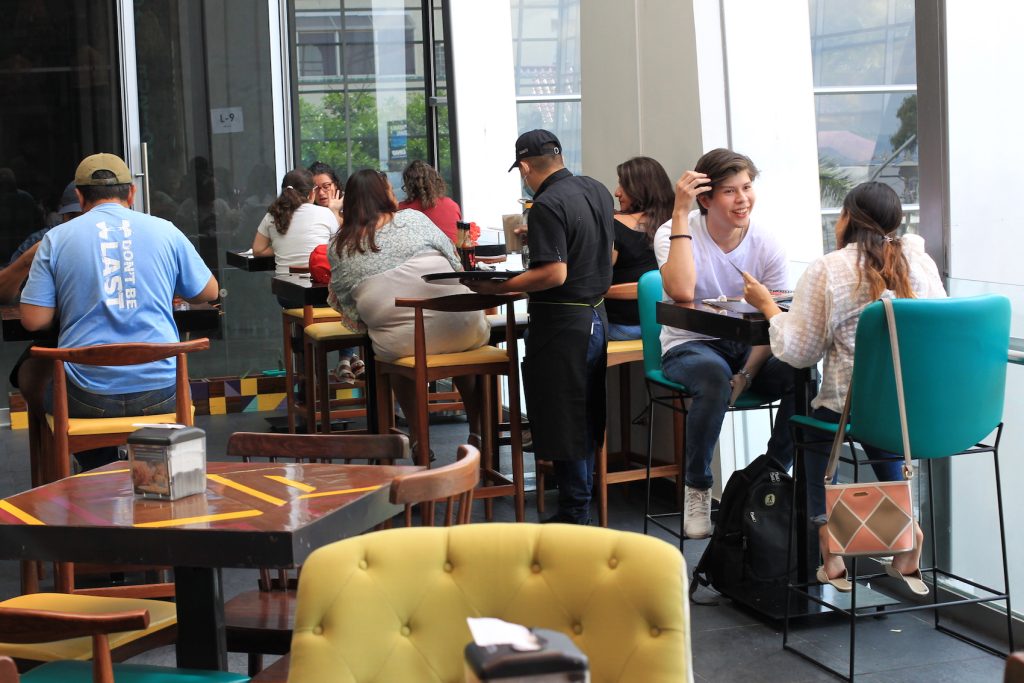Much more than a pupusa

Salvadoran gastronomy is characterized by the fusion of three great cultures, the Native (Pipil and Lenca), the Spanish and the Arab. It is made mainly with locally sourced ingredients, especially corn, beans, rice, chicken, beef, pork, seafood, some wild animals, dairy, and many fruits and vegetables. Its salient drink is coffee.
The consumption and production of milk in El Salvador is really important. Nowadays, the consumption is 175 liters of milk per person per year. Due to this large consumption there is a strong market for the production of milk derivatives in the country, such as cheeses and dulce de leche.
El Salvador belongs to Mesoamerica and, therefore, has a great variety of native foods such as corn, which is the main ingredient of its gastronomy. Various dishes are made with this grain, like pupusa (a thick omelette made with corn or rice, filled with one or more ingredients, such as cheese, crackling, ayote, refried beans and loroco), among others.
The most representative dishes of Salvadoran gastronomy are pupusa, tamales (pre-Columbian food, created by Mesoamerican cultures and usually prepared with a corn or rice base filled with meats, vegetables, sauces and other ingredients), asado, pasta, fruits and coffee.
With the arrival of the Spanish, various ingredients were added to the local culinary culture, such as beef. Subsequently, massive waves of immigrants arrived, mainly from Italy and the Middle East. Italians came in with a lot of well-known dishes, such as pizza, lasagna, pasta, and gnocchi. The Arabs, mostly Palestinians and Lebanese, introduced ingredients and dishes from their local food, and popularized the use of aubergines in Salvadoran recipes.
The Great Pink Zone of San Salvador: where it all begins
Located in the department of San Salvador, the main capital, it is recognized for its great development of the tourist, hotel and nightlife sectors of the city. It is made up of hotels, bars, restaurants, cafes, museums, apartment towers and embassies. Only the ‘Zona Rosa’ brings together more than 56 restaurants, 22 cafes and 22 bars of all qualities and fusions. In addition, it has 17 hotels -6 of them with the biosafety seal-, 5 international bus stations, 8 shopping centers and 11 art galleries or museums.
Gastronomic Lab
The current government has several projects for this area to foster specialization and promotion of Salvadoran gastronomic culture.
At present, the Tourism Office is leading a project called the Surf City Gastronomic Laboratory. That is the name of the central program that will promote the country through its differential value: its waves. In its first phase, this project is implemented in La Libertad and its great ally is the World Food Program (WFP).
The Gastronomic Laboratory seeks to train young people as chefs, an activity that gives them the chance to make their own path into the workplace inside the area where they live. While changing lives, it seeks to strengthen the training of human resources in the area, which is a pillar of the Surf City strategy (see topic on page XX).
The Tourism Office is contributing with physical spaces so that young people can train. A practice kitchen will be built at the Malecón del Puerto de La Libertad, known as the gateway to Surf City, an obligatory stop for all tourists. It is estimated that more than 1.2 million people visit the site each year.
The project is linked with a larger one: coordinate the entire value chain. That is to say, connect them with producers and entrepreneurs. In addition, it seeks to motivate a culinary knowledge that promotes the wealth that El Salvador has in agriculture and to rescue its flavors and culinary roots, with an innovative touch in each recipe.
Involved in the Laboratory
-Young people from the town near La Libertad
-Tourism entrepreneurs in the La Libertad area
-Local governments
-Tourism Cabinet
-Agricultural producers


